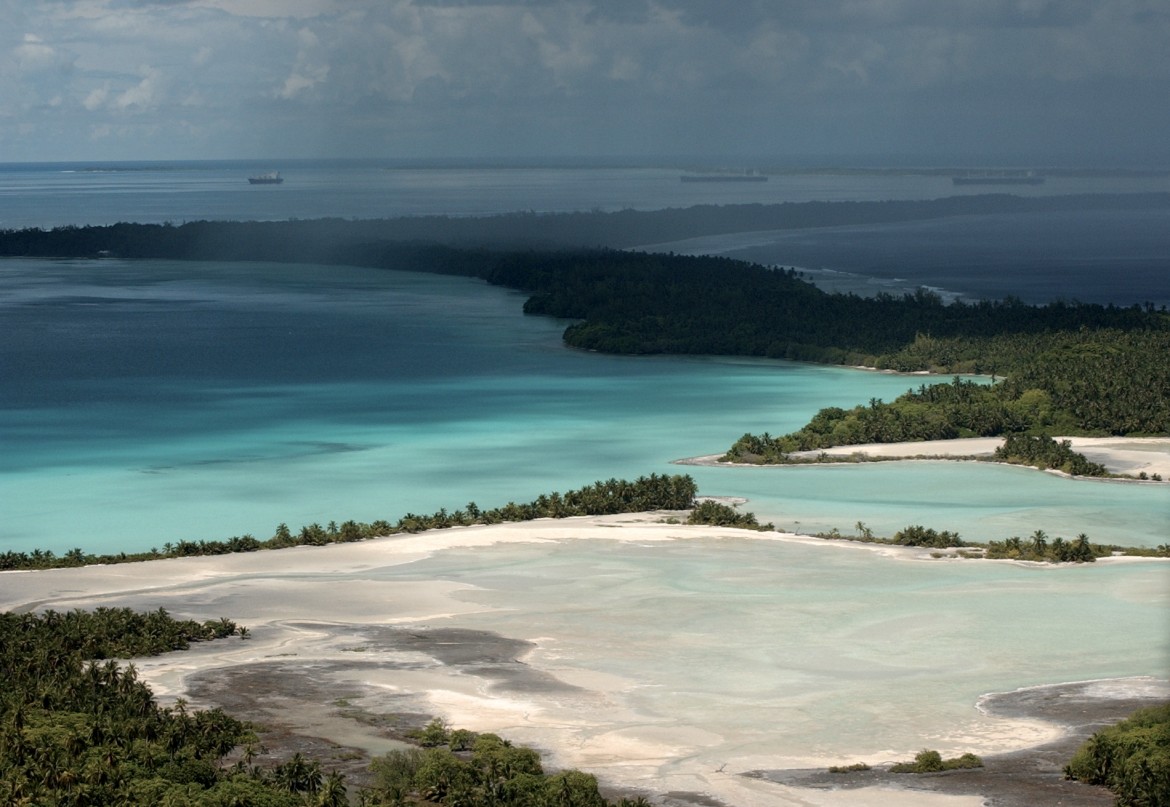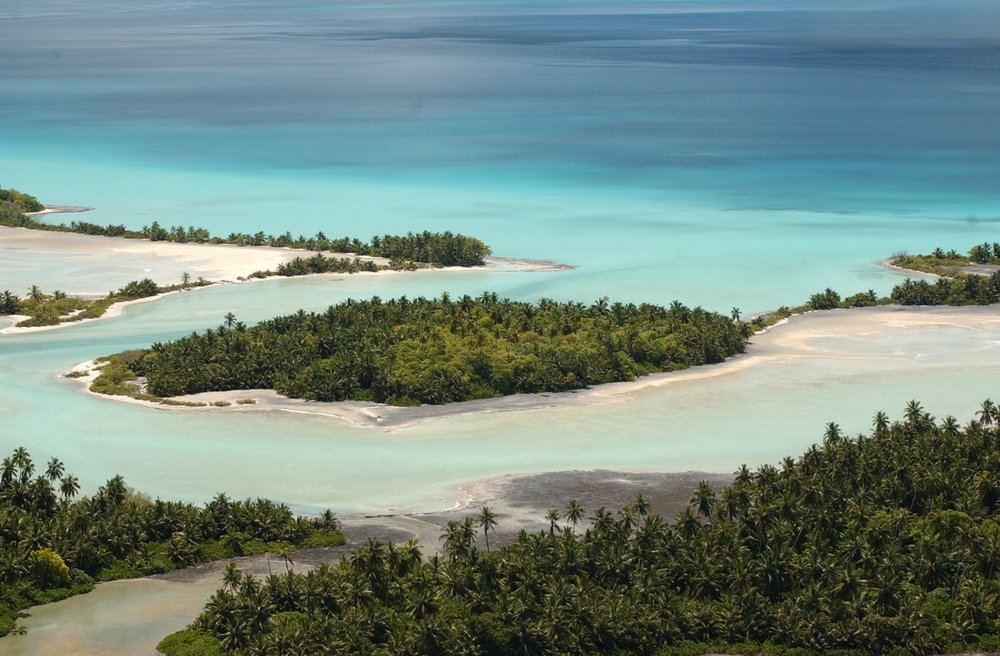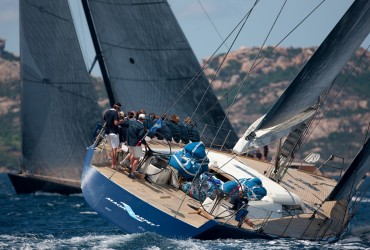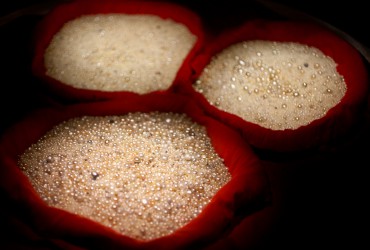Murky Protected Waters
Northeast of Mogadishu, along the Somali coast of the Indian Ocean, the land is barren and inhospitable. In the water, however, a green turtle is happily foraging the abundant sea grasses. This particular turtle, affectionately named “61811”, is famous. Indeed, in 2013, she completed the longest ever recorded migration for an adult turtle: a staggering 3’979 kilometres journey without stopping. 61811 swam for more than 60 days with a single idea in mind: to fill her belly up with the uniquely tasty Somali sea grasses.
Once full and satisfied, she swam back to her safe breeding and nesting ground. A postcard-perfect beach on the east coast of Diego Garcia, in the Chagos Archipelago. A place where her endangered species is protected and can thrive.
The secluded archipelago has recently been encapsulated in a gigantic Marine Protected Area, where the strictest conditions for marine sanctuaries apply. “Yes, it is the largest marine reserve on the planet, Elisabeth Whitebread, a trustee of the Chagos Conservation Trust, tells me. According to the IUCN, there are six categories for protected areas. The Chagos are in category one, the strictest, thus offering a fully no-take zone of 640’000 square kilometres”. Twice the size of the U.K.
Today, less than 1% of the marine world is as strictly protected as the Chagos Marine Reserve. This sanctuary is so big, it singlehandedly doubled the amount of global ocean under full protection. Its health and beauty are outstanding, and its tropical waters offer a rare glimpse into the past. Nothing makes more sense than to protect what is arguably one of the last unspoilt chunks of life-rich waters on the planet, where pollution, agricultural run-off and hordes of careless tourists are nowhere to be found.
Since April 2010 and the establishment of the Chagos Marine Reserve, 61811 can go on her long foraging journeys with a peace of mind. When she’ll be back, her nesting beach will be exactly like she left it. Along with the other endangered green turtles, the waters have also been a nursery for the 800 species of fish and 50 species of sharks and rays that are then free to replenish the declining stocks of the Indian Ocean. It’s a win-win situation for almost everybody. But some are bound to complain.
Fishermen aren’t happy to be banned from the reserve’s formidable biomass, and the BIOT’s prison on Diego Garcia has already seen more than a few poachers who couldn’t resist the temptation. “Poachers come mostly from Sri Lanka, and they are looking for sea cucumbers. Before the creation of the reserve, tens of thousands of sharks used to be killed each year as by-catch. That has now stopped, and it is probably our greatest success so far” Whitebread explains.
 In the marine world, everything is interconnected. A healthy population of sharks and sea cucumbers contribute to a healthy reef system, which in turn sustains fish population. The water quality in the park is unparalleled, contributing to the reef’s resilience. “A reef cannot be managed, Professor Charles Sheppard told the audience during the 2013 CCT conference at the Zoological Society of London. However, harmful human activity can be managed. The El Niño of 1998 was really bad for the corals of the Indian Ocean. We recorded mass bleaching and deaths. Today, the corals in the reserve are in much better shape than in any other place of the Indian Ocean. According to our 2012 study, reefs are now in the same shape as they were in 1978 thanks to the water’s purity”.
In the marine world, everything is interconnected. A healthy population of sharks and sea cucumbers contribute to a healthy reef system, which in turn sustains fish population. The water quality in the park is unparalleled, contributing to the reef’s resilience. “A reef cannot be managed, Professor Charles Sheppard told the audience during the 2013 CCT conference at the Zoological Society of London. However, harmful human activity can be managed. The El Niño of 1998 was really bad for the corals of the Indian Ocean. We recorded mass bleaching and deaths. Today, the corals in the reserve are in much better shape than in any other place of the Indian Ocean. According to our 2012 study, reefs are now in the same shape as they were in 1978 thanks to the water’s purity”.
Professor Sheppard, chairman of the CCT, dedicated the past 40 years of his work to the research and conservation of the Chagos Archipelago. He is focused on marine ecosystems’ response to climate change. Aboard the Pacific Marlin, he leads research expeditions that allow scientists to explore how best to protect other, more degraded parts of the ocean. “The Chagos Archipelago provides a unique living laboratory for the scientific community. Each expedition helps us to gain rare and precious insights”, he explains.
For the past 4 years, each scientific expedition in the Chagos Marine Reserve has had a member of the Chagossian community go along. This “outreach program” is dedicated to the inclusion of Chagossians in the conservation process. Until recently, the exiled community was not made aware of the hard work that was happening near their home islands. “We took part in the program during several months, Pascaline and Esther Cotte, two sisters from the Chagossian community in the U.K. told me. On the weekends, we learned all about the study of fish, birds, algae and we collected laboratories samples. Later we went with Professor Sheppard on the Pacific Marlin. The program is the link between the CCT and our community.” When I ask her if they would accept to go to live on the islands if given the opportunity, Pascaline tells me she would as long as her job is a meaningful one, such as taking part in the conservation of the reserve. Esther on the other hand was happy to see the beauty of the place with her own eyes, but wouldn’t want to live in the Chagos. Nevertheless, they are delighted to be included in the adventure.
Until 2010, this wasn’t the case. “Around the world, when natural protected areas are created, the locals are always part of the preliminary process, Richard Dunne, a British Lawyer who represents the Chagossians, told me. In the history of the Chagos, the natives have been systemically put aside. The reserve has been created without their input, even though the islands were their home and they were knowledgeable about them.”
Elisabeth Whitebread, the CCT trustee, briefed me on the foundation of the reserve: “The idea of creating really large and highly protected marine areas is quite a recent one. There were only two or three prior to the one in Chagos. The CCT had been working for twenty years on improving the conservation of this unique environment, but it is the PEW Charitable Trusts in 2007 that planted the idea of a marine reserve this large”.
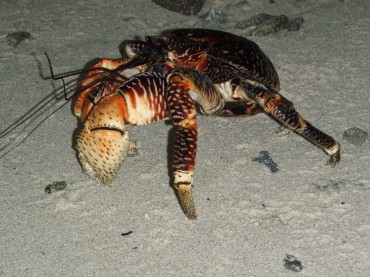 The Chagos Environment Network of nine organisations based in the U.K. was born, and the Swiss Bertarelli Foundation later chipped in the money necessary to establish and run the park for the first five years. The PEW Charitable Trusts, one of the wealthiest foundations in the world, even funded a public relation campaign to support its idea for the largest marine reserve in the world. All these efforts paid back, and U.K. Ministers “liked the idea”. The Marine Protected Area was officially created in April 2010 by the top British diplomat Colin Roberts in his role as Commissioner for the British Indian Ocean Territory, on the instructions of David Miliband, then Foreign Secretary.
The Chagos Environment Network of nine organisations based in the U.K. was born, and the Swiss Bertarelli Foundation later chipped in the money necessary to establish and run the park for the first five years. The PEW Charitable Trusts, one of the wealthiest foundations in the world, even funded a public relation campaign to support its idea for the largest marine reserve in the world. All these efforts paid back, and U.K. Ministers “liked the idea”. The Marine Protected Area was officially created in April 2010 by the top British diplomat Colin Roberts in his role as Commissioner for the British Indian Ocean Territory, on the instructions of David Miliband, then Foreign Secretary.
Although the British politicians were keen to quickly move forward, several senior diplomats strongly advised not to rush in the creation of the reserve. Recently published email conversations revealed concerns that “a rapid decision would undermine our efforts to establish a MPA with a conscientious and careful decision-making process”. Andrew Allen, head of Southern Ocean at the Foreign Commonwealth Office wrote: “This approach risks deciding (and being seen to decide) policy on the hoof for political timetabling reasons rather than on the basis of expert advice and public consultation.” He was right.
Without taking note of the advice, David Miliband rushed through the establishment of the MPA in his final weeks as Foreign Secretary. Those were also the dying days of the last U.K. Labour government. In addition to those emails, a secret U.S. diplomatic cable released by WikiLeaks in 2011 further confirms that the MPA was created for political rather than scientific reasons. The cable reveals private meetings between Colin Roberts, the BIOT commissioner, and his American counterparts. Robert stated that “Her Majesty’s Government is under pressure from the Chagossians and their advocates to permit resettlement. However, there would be no human footprints or Man Fridays on the BIOT’s uninhabited islands. The establishing of a marine park would, in effect, put paid to resettlement claims of the archipelago’s former residents. The U.K.’s environmental lobby is far more powerful than the Chagossians’ advocates”.
The cable made public by WikiLeaks also sheds some light on the American’s concern over the MPA. Indeed, “the designated marine park could, years down the road, create public questioning about the suitability of the BIOT for military purposes”. Robert agreed, stating that “the primary purpose of the BIOT is security, and it has served its role well, much more than anyone foresaw in the 1960s.”
Elisabeth Whitebread explains how a large military base can cohabit with a marine reserve: “Actually, Diego Garcia and a three mile ring around the island are excluded from the marine reserve. It’s kind of a hole in the middle of the MPA. This allows the personnel on the base to still undertake their usual operations, and on weekends they can continue with their recreational fishing”. She adds that military operations have caused limited damage to the coral reef around Diego Garcia. “However, compared to the damage that we see to coral reefs elsewhere in the Indian Ocean, impacted by pollution and agricultural run-off, the reefs around Diego Garcia and the rest of the Chagos are in much better shape.”
With this well-found condition that suits The U.S., the MPA was allowed to be created. But not everybody was happy with that decision. For one, Mauritius had been disputing sovereignty over the Chagos for decades. The Mauritian government claims that the detachment of the archipelago in 1965 was done against the UN general assembly resolution 1514, which specifically bans the breakup of colonies prior to independence. Furthermore, they now contest the legality of the MPA in regards of the historical fishing rights of Mauritius and the Chagossians. The dispute was taken to court, and Richard Dunne represents Olivier Bancoult and the rest of the Chagossians in that matter. He says: “If the park had been created with the sole motive of nature conservation, it would have been fine. But a different agenda was being followed. We are fighting the creation of the MPA in court because the U.K. has never considered the historical fishing rights of the Chagossians. Also, the British government has a duty to promote the economy of its territories. By ending the fishing rights in the Chagos, the U.K. is going against this duty.”
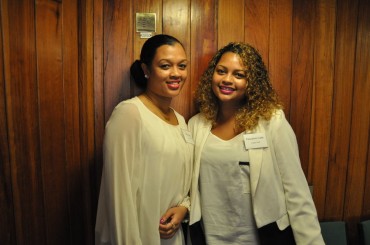 Chagossian and Mauritian lawyers have brought up the WikiLeaks cable in court, but it was turned down as evidence because of the Vienna Convention. Signed in 1961, it protects Diplomatic Privileges, stating that “archives and documents of the mission shall be inviolable at any time and wherever they may be”. A serious blow to the Mauritian’s and Chagossians’ cases.
Chagossian and Mauritian lawyers have brought up the WikiLeaks cable in court, but it was turned down as evidence because of the Vienna Convention. Signed in 1961, it protects Diplomatic Privileges, stating that “archives and documents of the mission shall be inviolable at any time and wherever they may be”. A serious blow to the Mauritian’s and Chagossians’ cases.
Ironically, Chagossians are mostly in favour of the MPA, as demonstrated by the recent KPMG resettlement feasibility draft report. It outlines that “the Chagossian community as a whole are very environmentally conscious. The community is willing to play an active part in maintaining the pristine environment of the BIOT”. Many Chagossians have expressed their willingness to find employment as environment monitors. Not only would that enable them to live and work on the land of their ancestors, but it would profit to the conservation of this unique place.
Richard Dunne told me that there was a serious problem with imported rats on the islands of Chagos. They came on boats and wrecks since the 16th century, and have been a threat to the nesting wild birds. To try and get rid of them, small crews of volunteers occupy an island at a time and capture as many rats as possible. They stay until they think that the rats are extinct from the island, and move to the next one, but time and again the rats keep coming back. Additional workforce is badly needed, so to stay longer on the islands and make sure the rat populations are entirely wiped out.
It is to be seen if the KPMG report and the end of Diego Garcia’s lease will change the Chagossians’ fate. They are still denied the right to return to their homeland, despite the worldwide support they gained over time. One of the most shameful episodes in modern British colonial history is still impacting the lives of Bernadette Dugasse, Olivier and Rita Bancoult, and thousands of other people. It is never too late to right a wrong, how old it might be.
